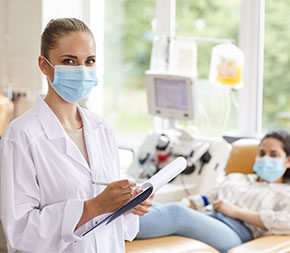Some Known Details About Northeast Medical Institute - New Haven Campus Phlebotomy Course & Cna Class
Some Known Details About Northeast Medical Institute - New Haven Campus Phlebotomy Course & Cna Class
Blog Article
See This Report on Northeast Medical Institute - New Haven Campus Phlebotomy Course & Cna Class
Table of ContentsIndicators on Northeast Medical Institute - New Haven Campus Phlebotomy Course & Cna Class You Should KnowNot known Incorrect Statements About Northeast Medical Institute - New Haven Campus Phlebotomy Course & Cna Class Northeast Medical Institute - New Haven Campus Phlebotomy Course & Cna Class - The FactsGetting The Northeast Medical Institute - New Haven Campus Phlebotomy Course & Cna Class To WorkNortheast Medical Institute - New Haven Campus Phlebotomy Course & Cna Class - The FactsSome Known Factual Statements About Northeast Medical Institute - New Haven Campus Phlebotomy Course & Cna Class
The use of such devices need to be accompanied by various other infection avoidance and control practices, and training in their use. Not all safety tools apply to phlebotomy. Prior to picking a safety-engineered tool, customers ought to extensively check out offered devices to establish their ideal usage, compatibility with existing phlebotomy practices, and efficacy in securing personnel and clients (12, 33).For settings with reduced resources, expense is a motoring element in purchase of safety-engineered tools. Where safety-engineered gadgets are not readily available, competent usage of a needle and syringe is acceptable.
Among the crucial markers of high quality of treatment in phlebotomy is the participation and teamwork of the patient; this is mutually useful to both the wellness worker and the client. Clear details either created or spoken should be available to each client that goes through phlebotomy. Annex F gives sample message for discussing the blood-sampling procedure to a client. In the blood-sampling room for an outpatient department or clinic, give a comfy reclining sofa with an arm rest.
The Greatest Guide To Northeast Medical Institute - New Haven Campus Phlebotomy Course & Cna Class
Ensure that the indications for blood sampling are clearly specified, either in a written protocol or in documented guidelines (e.g. in a laboratory form). In all times, follow the strategies for infection prevention and control noted in Table 2.2. Infection prevention and control practices. Accumulate all the tools required for the procedure and place it within safe and simple reach on a tray or trolley, ensuring that all the items are plainly noticeable.
Where the client is grown-up and aware, comply with the steps detailed listed below. Introduce yourself to the individual, and ask the person to state their complete name. Inspect that the laboratory kind matches the client's identity (i.e. match the client's details with the research laboratory form, to make sure precise identification). Ask whether the patent has allergies, anxieties or has ever fainted during previous injections or blood draws.
Make the patient comfy in a supine position (if possible). The client has a right to refuse an examination at any type of time before the blood sampling, so it is vital to make sure that the individual has recognized the procedure - PCT Training.
The Ultimate Guide To Northeast Medical Institute - New Haven Campus Phlebotomy Course & Cna Class
Prolong the person's arm and inspect the antecubital fossa or forearm. Find a blood vessel of an excellent dimension that is noticeable, straight and clear. The layout in Section 2.3, shows typical positions of the vessels, however several variations are possible. The average cubital capillary exists in between muscular tissues and is typically one of the most easy to pierce.
DO NOT put the needle where capillaries are diverting, since this boosts the opportunity of a haematoma. The blood vessel needs to be noticeable without using the tourniquet. Situating the vein will certainly help in establishing the appropriate size of needle. Apply the tourniquet about 45 finger sizes above the venepuncture website and re-examine the vein.
Samplings from main lines carry a danger of contamination or erroneous research laboratory test outcomes. It is acceptable, however not ideal, to attract blood samplings when first introducing an in-dwelling venous device, before attaching the cannula to the intravenous fluids.
Some Known Facts About Northeast Medical Institute - New Haven Campus Phlebotomy Course & Cna Class.
Failing to enable adequate call time raises the risk of contamination. DO NOT touch the cleaned site; in specific, DO NOT put a finger over the capillary to lead the shaft of the revealed needle.
Ask the client to develop a clenched fist so the blood vessels are much more popular. Enter the blood vessel promptly at a 30 degree angle or less, and continue to present the needle along the capillary at the simplest angle of entry - PCT Training. Once sufficient blood has actually been gathered, release the tourniquet prior to withdrawing the needle
See This Report about Northeast Medical Institute - New Haven Campus Phlebotomy Course & Cna Class
Take out the needle gently and apply mild pressure to the site with a tidy gauze or completely dry cotton-wool ball. Ask the person to hold the gauze or cotton wool in position, with the arm expanded and increased. Ask the client NOT to flex the arm, because doing so creates a haematoma.

How Northeast Medical Institute - New Haven Campus Phlebotomy Course & Cna Class can Save You Time, Stress, and Money.
Where possible, maintain the tubes in a rack and move the rack in the direction of you - https://www.storeboard.com/northeastmedicalinstitute-newhavencampusphlebotomycourseandcnaclass1. If the example tube does not have a rubber stopper, infuse exceptionally gradually right into the tube as reducing the stress and speed utilized to transfer the sampling lowers the danger of haemolysis.
:max_bytes(150000):strip_icc()/Primary_Image-b2e24c37575f48279cff673865d3853c.jpg)
Report this page